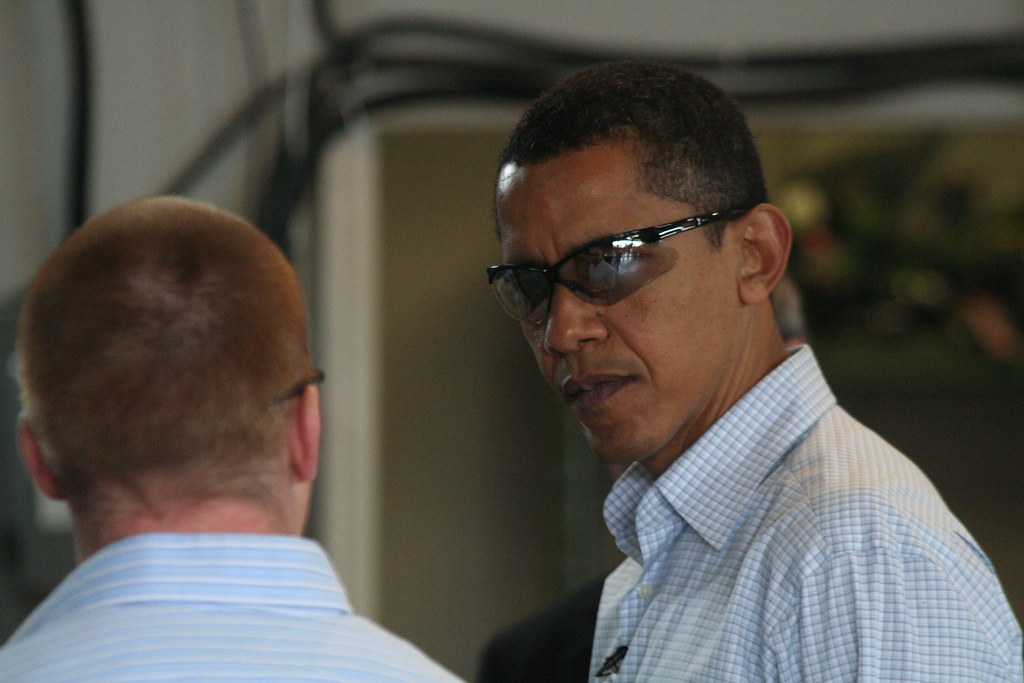
Photo credit Barack Obama
President Barack Obama was in Florida on Tuesday this week for the official opening of Florida Power and Light’s new solar energy power plant. The 90,000+ solar panel plant, which has been installed across 180 acres of the 5,000 acre FPL property, is expected to generate 25MW of clean electricity (enough to power 3,000 homes) making it the largest operating solar power plant in the US.
President Obama took the opportunity to announce (slightly sooner than was expected) the awarding of $3.4 billion in investment grants to help spur the transition to smart grids in the US.
According to theReuters report:
The grants, which range from $400,000 to $200 million, will go to 100 companies, utilities, manufacturers, cities and other partners in 49 states — every state except Alaska….
The winning companies have secured an additional $4.7 billion in private money to match their government grants, creating $8.1 billion in total investment in the smart grid.
Full listings of the grant awards by category and state are available here and here. A map of the awards is available here.
The announcement includes:
- $1 billion for smart meters and in-home display technologies
- $400 million for grid modernization projects to make electricity distribution and transmission more efficient with digital monitoring and increased grid automation
- $2 billion, the bulk of the monies, is going to projects which help integrate all the various components of smart grids so they can interoperate seamlessly and
- $25 million to help expand the manufacturing base of companies that can produce the smart meters, smart appliances, synchrophasors, smart transformers, and other components for smart grid systems
And some of the outcomes of the awards will be:
- Will put the US on pace to deploy more than 40 million smart meters in American homes and businesses over the next few years
- Install more than 1 million in-home displays, 170,000 smart thermostats, and 175,000 other load control devices to enable consumers to reduce their energy use. Funding will also help expand the market for smart washers, dryers, and dishwashers, so that American consumers can further control their energy use and lower their electricity bills.
- Install more than 200,000 smart transformers that will make it possible for power companies to replace units before they fail thus saving money and reducing power outages
- Install more than 850 sensors – called ‘Phasor Measurement Units’ – that will cover 100 percent of the U.S. electric grid and make it possible for grid operators to better monitor grid conditions and prevent minor disturbances in the electrical system from cascading into local or regional power outages or blackouts. This monitoring ability will also help the grid to incorporate large blocks of intermittent renewable energy, like wind and solar power, to take advantage of clean energy resources when they are available and make adjustments when they’re not.
- Install almost 700 automated substations, representing about 5 percent of the nation’s total that will make it possible for power companies to respond faster and more effectively to restore service when bad weather knocks down power lines or causes electricity disruptions.
- Reduce peak electricity demand by more than 1400 MW, which is the equivalent of several larger power plants and can save ratepayers more than $1.5 billion in capital costs and help lower utility bills. Since peak electricity is the most expensive energy – and requires the use of standby power generation plants – the economic and environmental savings for even a small reduction are significant. In fact, some of the power plants for meeting peak demand operate for only a few hundred hours a year, which means the power they generate can be 5-10 times more expensive than the average price per kilowatt hour paid by most consumers
- Put the US on a path to get 20% or more of its energy from renewable sources by 2020.
Those are some pretty impressive numbers and they should go a long way towards helping the US modernise its ageing electricity distribution system, facilitating the greater penetration of renewable power suppliers onto the grid and thereby reducing America’s enormous carbon footprint!
